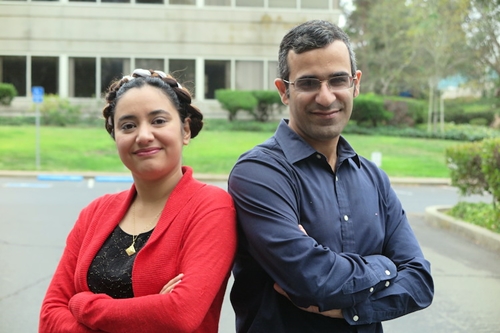6 October 2015. Breakout Labs, an incubator of new enterprises based on discoveries from academic science labs, is adding four more companies to its portfolio. The new additions include companies developing advanced materials and sensors to measure food freshness, as well as discovering new therapies for diseases associated with the aging process.
Breakout Labs is a creation of the Thiel Foundation, started by a Silicon Valley entrepreneur and investor Peter Thiel, co-founder of PayPal and early venture backer of Facebook. Thiel’s goal is to provide initial funding and support for new enterprises practicing what he calls “radical science” that are often overlooked or rejected by traditional funding agencies and venture financiers. “Our portfolio companies,” says the Breakout Labs Web site, “are building things that have never been thought of before, pushing the boundaries of what’s possible instead of settling for what’s probable.”
Two of the companies joining Breakout Labs develop new materials. Maxterial Inc. in San Francisco seeks to emulate processes found in nature to add a water-repellent layer to the surface of metals. Its process changes the surface of materials by introducing a microlayer of air pockets, making the underlying material hydrophobic and thus more resistant to corrosion and accumulations of ice. The company, founded by Mehdi Kargar and Atieh (Amy) Haghdoost, conducted their research while pursuing Ph.D. degrees in mechanical engineering at Virginia Tech in Blacksburg.
NanoGriptech in Pittsburgh, also creates new materials emulating processes in nature, in this case the strong gripping power of gecko reptiles. The company is a spin-off from Carnegie Mellon University developing a dry adhesive material called Setex that adopts the idea of nanoscale fibers found on the feet of geckos to stick to almost any surface without leaving a residue. NanoGriptech expects the product to have a broad range of industrial, commercial, and health care applications.
C2Sense, in Cambridge, Massachusetts designs miniature sensors that monitor the freshness of food. The company is a spin-off from the lab of chemist Timothy Swager at MIT that studies chemical and laser sensor technologies. Not only are the sensors made by C2Sense small in size — as many as 30 can fit on a surface the size of a credit card — they can detect organic gases in very low concentrations, sometimes less than parts per million. In addition, the sensors are much lower in price than conventional electrochemical sensors or gas chomatography, and require very little power to operate.
CyteGen, the fourth company joining Breakout Labs, is still in early stealth mode, but according to Breakout Labs is creating a discovery platform addressing health needs triggered by the aging process. The company expects to tap into an interdisciplinary panel of resources and experts at eight universities to approach aging from a systematic and holistic perspective. “There is an assumption that aging is necessarily associated with a physical and mental decline that results in Alzheimer’s, Parkinson’s, MS, and other diseases,” says co-founder and company president George Ugras in a Breakout Labs statement. “Evidence indicates otherwise, which is what spurred us to launch CyteGen.”
Breakout Labs provides grants of up to $350,000 per recipient to early stage companies with innovative solutions involving the life sciences and advanced technology. The program says it seeks proposals from companies creating new types of technology platforms, including advances in instrumentation, assays, or biological interventions. Breakout Labs provides support through specified milestones indicating an ability for the companies to continue on their own.
Financing from Breakout Labs operates on a revolving fund model. The Breakout Labs grant agreement asks funded companies that retain the intellectual property from their projects to commit a modest royalty stream and an option for a small investment in their company to Breakout Labs. The funders also ask grantees to submit their funded research for open-access publication within six months following the end of the grant.
Read more:
- Allied Minds Forming Space Signaling Company
- Allied-Bristol Licensing Immunotherapy Technology
- Biomedical Accelerator Accepts 12 New Research Projects
- Phillips, MIT Form Health Technology Collaboration
- UC-Davis, National Labs to Train Science Entrepreneurs
* * *


 RSS - Posts
RSS - Posts
You must be logged in to post a comment.